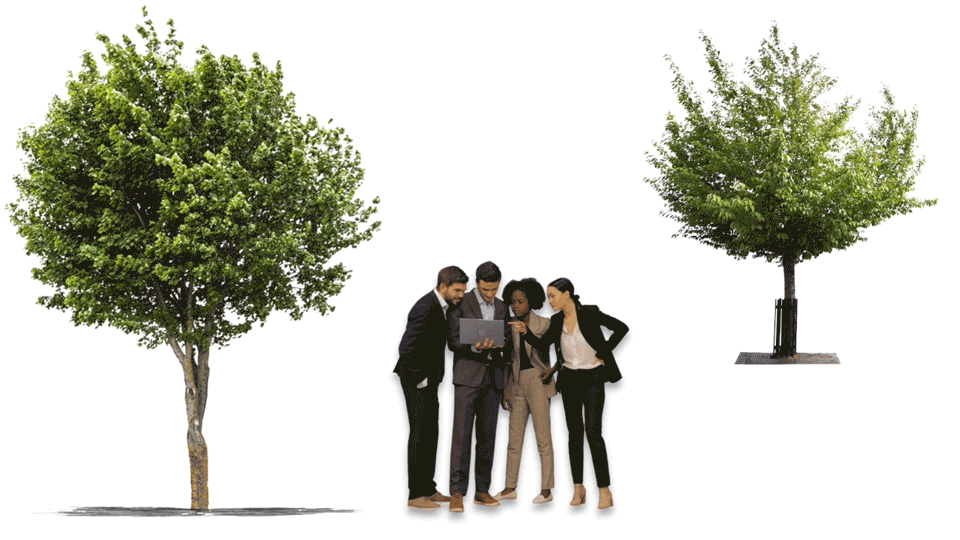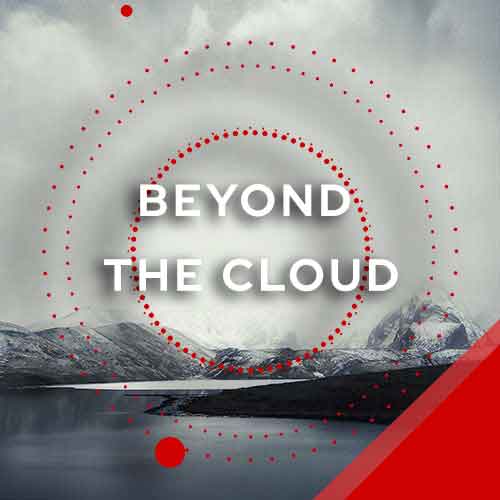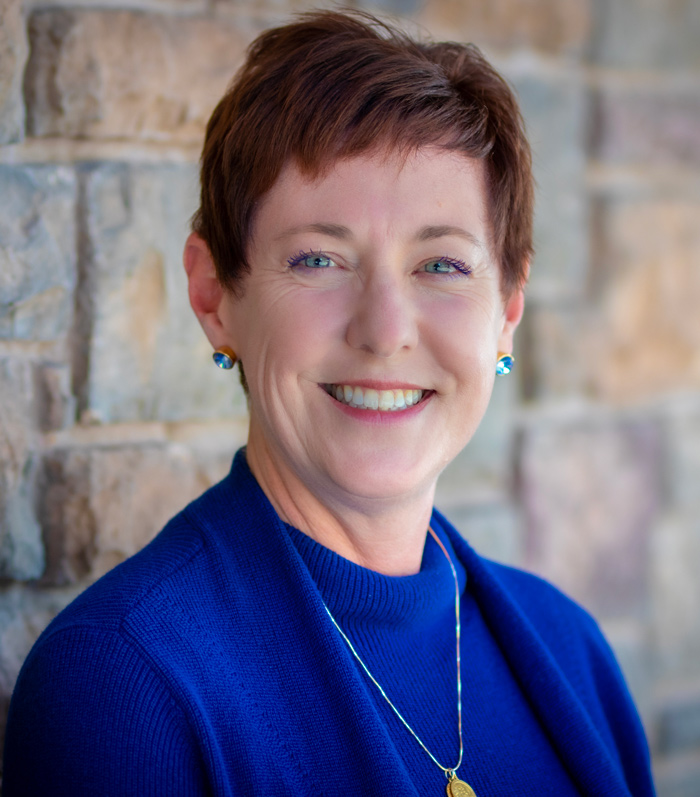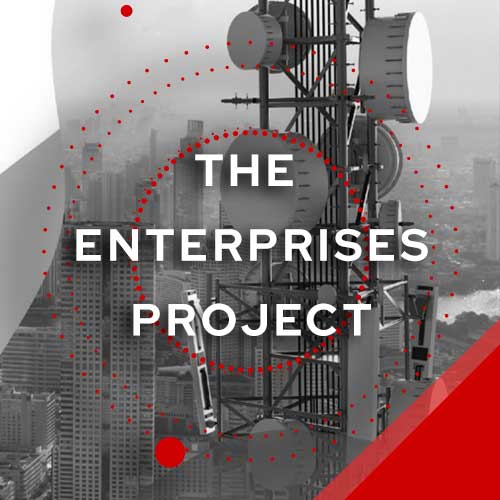

Introduction
The communications networking sector is undergoing a massive technological change as cloud-oriented and disaggregated, multi-vendor platforms emerge as the optimum solution to the needs of network operators in the 5G era.
But when telco executives are asked about their biggest challenges, they rarely highlight technology – they say the R&D work is underway, and visible, and the trajectory towards next-generation systems is in progress and understood.
Instead, the biggest hurdle often identified is the cultural change required within telecoms companies – a cultural shift that is needed if the next-gen platforms and systems are to be put to good use.
And it goes much further than that: For years, network operators and their suppliers have identified the need for a change in skillsets, workforce make-up, strategic thinking and more, but the pace of change has been slow and many of the conversations behind closed doors. Now, though, the industry has come to terms with the fact that the digital transformation so often talked about must go hand-in-hand with a cultural transformation, and that’s something that can’t happen in isolation – it required a willingness to work together not just with partners, customer and suppliers but often too with those regarded as traditional rivals, relationships that often begin through collaboration and cooperation in the open source industry communities.
So we talked to a broad range of influential companies and key decision-makers about how they are adapting, evolving, innovating, collaborating and building new teams and workplace processes to make the most of the opportunities that next-gen technology can enable. In the following chapters you’ll find real-world examples of how companies and organizations such as BT, Colt, Orange, Red Hat, TIM, TIP, Spark, Verizon and more are transforming and shaping the new culture of the communications networking sector.

It’s all in the mind
Telecoms operators are all too keen to talk about digital transformation and the greater flexibility associated with the move to software-driven networks.
But it’s not all about the technology; the people behind it also make a difference. Telcos are at different places in this journey, but many now realise that their employee base needs to be as agile as the technology it supports.
There has been much discussion in recent years of telcos emulating the Internet and technology giants, who, unencumbered as they are by legacy systems, have become famous for having flexible working structures and allowing their employees to fast fail, in the process fostering a culture of innovation. We have been talking about it for a long time, but it is finally happening, exacerbated to an extent by Covid-19. The mindsets of telecoms operators and their staff are changing.
“The employee mindset needs to keep up with the network, which itself demands an agile and fast-acting workforce to run it,” says Keri Gilder, CEO of Colt Technology Services.
Gilder introduced a new organisational structure at Colt in November 2020 with a view to fostering greater collaboration and innovation, and enabling Colt to respond quickly to technological change. This reshaping included the creation of a Strategy and Transformation team, which itself houses an Incubation team. This team “gives our employees the freedom to experiment continuously and allow mistakes and learnings to happen rapidly to fail forward,” Gilder says. She explains that Colt also has an Innovation Swap Programme, which allows some employees to switch to the Incubation team for a five-month period while their own role is temporarily backfilled. “[This] is a prime example of how team structure, driven by the need to be agile and innovative, has become more flexible,” she says.
Many telcos have yet to embrace this agile way of working. But others have been doing it for some time and have committed fully to the agile approach.
New Zealand’s Spark, which was an early adopter in the telco space, has adopted agile ways of working across its whole organisation over the past three years and is still putting employee culture at the centre of its plans: indeed, the development of what it terms ‘growth mindsets’ – in which employees are encouraged to think differently and adopt learnings from overseas market to solve problems, amongst other things – forms one of the four pillars of the new three-year strategy it shared in September last year.
The company has “highly engaged people empowered to make a difference in the work they do. And that’s absolutely what we need in spades as we head into these next three years,” said company chief executive Jolie Hodson, presenting the new strategy. “When we are successful, we will have a highly engaged team who are capable of adapting to the fast-changing environment around us.”
Spark has solid foundations to build on. It began its transition from traditional telco to digital services provider in 2013 and by 2018 was ready to commit to the agile way of working; in February of that year it set up three frontrunner agile tribes – the agile model uses language such as tribes, squads, scrums and so forth to categorise employee groups – and within three months announced plans to go even further, reporting improvements in customer-centricity, speed to market and, according to then-CEO Simon Moutter, “empowered and engaged employees with greater productivity. This has given us confidence to go faster in our agile transformation.” Going faster meant moving to an ‘agile at scale’ operating model.
“This was a bold strategy to transform our business. We have changed our culture and our ways of working,” said Hodson. “I’m really proud of how we’ve matured our agile ways of working. It’s helped us to grow employee engagement to +66 [NPS metric]… over the last three years.”
Spark may have been an early adopter of agile working practices, but others are following suit: To find out how the likes of BT, Deutsche Telekom are also adapting, read the extended version of this feature.
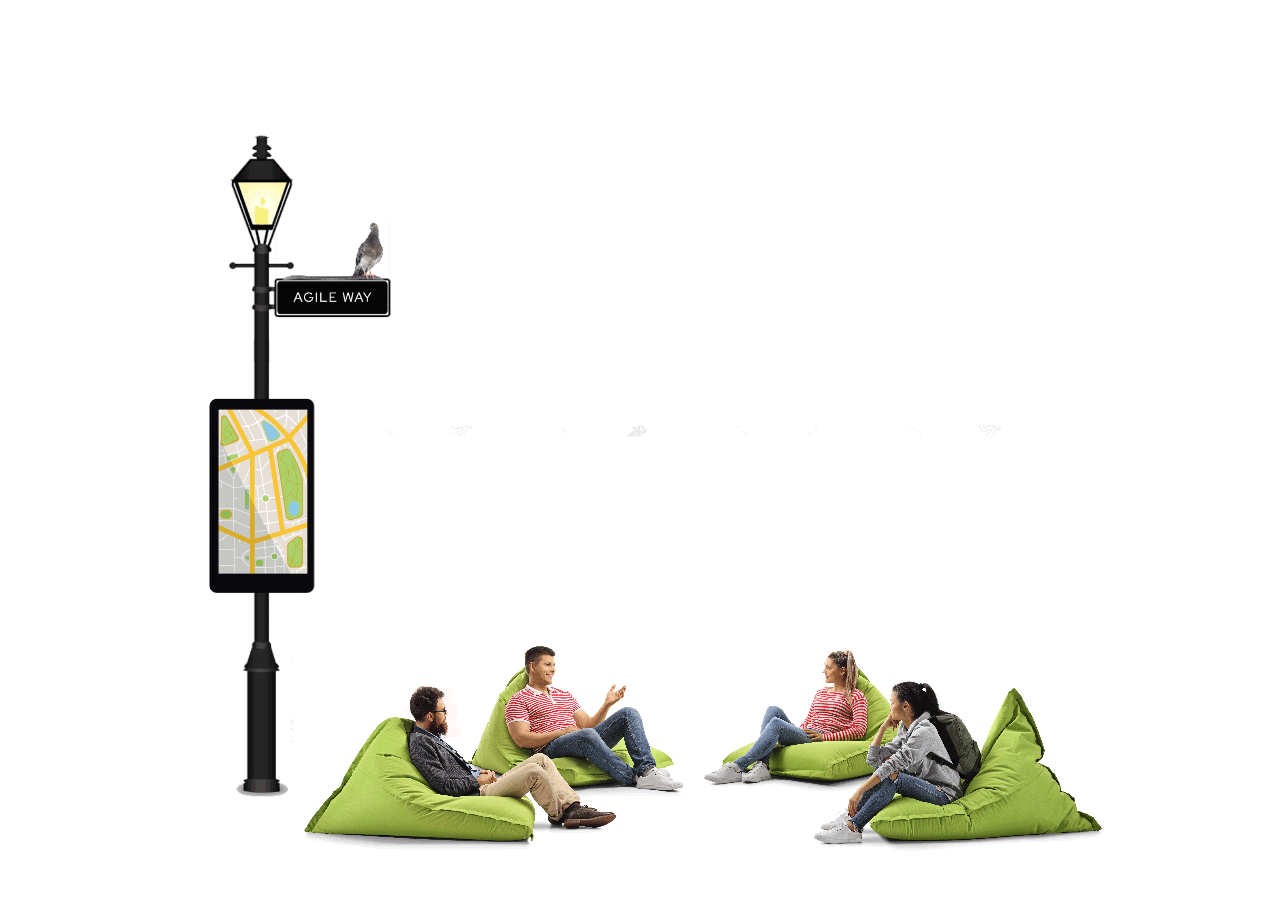
Casting a wider net
For telecoms operators, recruitment is no longer about hiring budding network engineers and computer science graduates.
The digital transformation brings a broader skills requirement and, as a consequence, many are looking beyond their traditional recruitment strategies to bring in young talent with more diverse educational backgrounds, while at the same time seeking to rebalance gender and ethnicity divides in their organisations. But they face stiff competition for talent.
“Our industry will soon be hitting a retirement cliff, and with that, we will lose much of the experience,” says Keri Gilder, CEO of Colt Technology Services. Telcos need to focus on all areas of diversity – age, gender, ethnicity, sexual preference and so forth – to create an inclusive culture to attract talent into telecoms, she says. “We are competing with the tech giants, big pharma and, let’s be honest, the likes of Elon Musk. We must differentiate our industry.”
It’s a challenge all telcos are facing, including BT, which has made some significant changes to its graduate recruitment policies in recent years in order to attract a broader range of talent into the company. Earlier this year the UK incumbent created a new Digital business unit and is looking to bring new skills into that side of its business.
“In the talent attraction space today, BT isn’t the first company you would think of for that work,” admits Mark Murphy, Director of HR, Technology at BT. “That’s one of the challenges we are really working hard to overcome – to illustrate to people that if you are an aspiring technologist in the UK, the breadth of technologies you can work on across our network and digital capabilities is like nowhere else, and we’ve got to find increasingly illustrative ways to tell that story.”
Key to BT’s recruitment strategy are its annual graduate and apprenticeship schemes. It had an intake of around 200 in September 2020: 75 graduates and 120-130 apprentices. History suggests those apprentices will stay with BT for longer than the graduates, having picked up a depth of technical specialism during their apprenticeship, while the graduates acquire broader but shallower skills, rotating around different areas of its technology business. Graduates start to churn three to four years after completing the programme; “the nature of high-quality technology grads is going to have an appetite to progress quickly,” Murphy says.
“[Apprenticeships] are a fantastic way for employers to recruit fresh talent and ensure that they are building a digital workforce for the future,” says Crissi Williams, CEO of the Institute of Telecommunications Professionals (ITP). “Most stay with the business after their apprenticeship ends and it has been shown that apprenticeships increase retention and motivation within an organisation.”
BT’s graduate scheme draws in talent from an increasingly broad range of disciplines and educational establishments. The Covid-19 pandemic put paid to its in-person customer showcases at Adastral Park, but the telco has moved that programme online and believes it is benefiting from reaching a greater number of people that way.
As a result, the operator is now casting its talent net wider than ever before. Its graduate scheme was once the preserve of those with degrees in the STEM subjects (science, technology, engineering and mathematics) from Russell Group universities, but over the past few years has opened up to a broader section of university leavers, with the telco looking for “an interest in technology…rather than a pure computer science, physics or maths background,” Murphy says. “They’ve got problem-solving ability, they’ve got a sharp curiosity and a sharp mind, but not necessarily in any particular discipline.”
But the move away from pure STEM is about more than just educational background.
“There is still a gender imbalance in those taking STEM subjects which inevitably leads to an imbalance in the workplace,” says Williams. She cites recent numbers from the WISE Campaign – set up to encourage girls and women into STEM – that show that women make up just 24% of the core STEM workforce, account for just over 10% of engineering professionals and 17% of IT professionals. “Many telcos are now realising that they are alienating an entire group of candidates if they look purely at STEM grads,” she says.
Other operators are looking at diversity too. In its outlook for 2021, Denmark’s TDC shared plans for a new diversity and inclusion governance model “to ensure that our goal for achieving gender balance in leadership is driven and monitored just as rigorously as any other strategic or financial target.” It aims for an equal balance of men and women at all management levels by 2025. Meanwhile, Spark NZ chief executive Jolie Hodson talked up the “50/50 gender split achieved across our board and leadership squad,” at a strategy day in September and pledged to reach a 40:40:20 ratio at all levels of employment, that being 40% women, 40% men and 20% of any gender.
Telcos may not have the pulling power of the technology giants when it comes to drawing in new talent, but they are working hard to transform themselves into attractive places to work for all people.
For an extended version of this feature, click here.
Back to school
Most major telecoms operators have large workforces, particularly when compared with the Internet giants, thus you could be forgiven for thinking they have all the knowledge they need at their fingertips as they transition into a more digital future.
Not so. The skills gap in telecoms has been well documented, particularly in key areas such as AI, automation and cybersecurity. “Operators struggle more with challenges around people and skills than technology,” according to the results of an AI and automation survey carried out by STL Partners for Nokia and published in March. Meanwhile, a study on the UK skills gap from online training company Avado put the technology and telecoms sector as one of the top performers for reskilling, but nonetheless 66% of survey respondents representing the sector said they believed there is a ‘capabilities gap’ in their business.
On a broader level, 53% of respondents to Deloitte’s 2020 Global Human Capital Trends survey said that “between half and all of their workforce will need to change their skills and capabilities in the next three years.” And in a March report called Connectivity & Beyond: How Telcos Can Accelerate a Digital Future for All, compiled with BCG, ETNO (the European Telecommunications Network Operators’ Association) noted that “65% of first graders will work in a job that doesn’t exist today.” Telcos will be part of that future picture for enterprises.
Bringing new talent into telecoms is one way to plug the gap, although that too is a challenge, with operators facing fierce competition to attract the brightest minds. But they have a huge amount of potential in those existing workforces and some are going to great lengths to unlock it. In short, telco staff are going back to school.
That’s certainly the case for Orange employees. The French firm made the skills challenge a core component of its current five-year strategic plan and in February last year announced its intention to invest €1.5 billion in a skills development and retraining programme covering its then 148,000-strong workforce.
“We put a priority focus on cybersecurity, data and AI, management and soft skills, and we are working to ensure that every employee can benefit from training, no matter what their position or level of expertise is,” says Elisabeth Fonteix, Head of Learning and Development for the Orange group. “We recently added 5G, Cloud and CSR training programmes too.” Orange also opened up its Orange Campus, which was previously reserved for training managers, to all employees.
Orange aims to double the number of experts in areas like network virtualisation, cloud, data, AI, and cybersecurity to more than 20,000 over five years; to develop the use and understanding of data, AI and cybersecurity firstly to marketing and network management teams and further to all employees; and to train all staff in soft skills by 2025. “We feel that we have made considerable progress over the past few months. For example, we are convinced that the acquisition of soft skills is now seen to be as essential as the acquisition of ‘hard skills,’ and that one should not work without the other,” says Fonteix. In 2020 almost 40,000 Orange employees sought to acquire soft skills, with areas such as home working and agility proving popular largely due to the Covid-19 pandemic.
“To date, 17,000 employees have been trained in data and AI, and our CSR initiation program has already been delivered to 16,000 employees,” Fonteix says.
Orange is not the only major communications service provider investing significant resources into upskilling. In 2019 Telefonica unveiled a €1.6 billion plan to reskill and upskill its workforce in Spain as part of a push on digitalising processes. The plan – which was also a cost-saving exercise, included an early retirement offer for workers over 53, and required the buy-in of trade unions – included enrolling 6,000 employees in reskilling programmes in areas like security, robotisation, analytics, web development, business consulting, IT and agile methodology capabilities, as well offering skill training programmes to all employees. As such, the telco said it would double its training budget and increase training hours per employee by up to 40%.
In 2020 more than 14,000 Telefonica employees in Spain took part in reskilling and upskilling programmes, the operator said in its annual report, in which it also listed reskilling as a challenge for 2021.
Reskilling projects costing billions of euros may not be the norm, but telcos everywhere are working hard on employee training and development.
“We have just completed NexTIM, [our] last major skills upgrading programme that took place between December 2020 and April 2021,” says Sofia Marcone, the executive in charge of upskilling and reskilling at Italy’s TIM. The programme delivered more than 3 million hours of training in various areas designed to: aid the transformation towards agile working methods; encourage interaction between different teams; and redefine the relationship between boss and employee, she explains.
The programme was split into three main areas: The first being around organisational innovation and focusing on changing people’s mindsets; the second area looked at skills in new network technologies, digital enablers and new business models based on the combination of 5G, big data and AI; while the third was about production processes and the use of tools such as analytics and big data solutions to help the company adapt to the changing market.
The Italian operator is in the process of launching a second training and development plan “with the aim of strengthening specialist skills and helping to realign skills with labour market requirements,” says Marcone. “The new plan will run for 18 months, involve almost all workers and provide around 1.4 million hours of training.”
Reskilling is a hugely complex undertaking, but the message is clear: by preparing staff for the digital future, telcos are also preparing themselves.
To find out what BT, STC and M1 are doing to retrain their staff, read the full version of this feature.
Diversity and inclusion in action: An interview with Red Hat’s Margaret Dawson
There’s no shortage of companies that talk about how they can benefit from a more diverse, inclusive, enabled and ‘open’ corporate culture.
More rare are the examples of companies that put such ideas into practise – that walk the walk as well as talk the talk.
One such company is Red Hat, which sent a very clear message that it was taking such matters very seriously when it named Margaret Dawson as Chief of Staff, Office of the CEO / Vice President, Diversity & Inclusion in February 2021.
Here we talk to Margaret about the company’s ‘open culture,’ its approach to diversity, equality and inclusion (and what that means in practical and strategic terms) and much more.
TelecomTV: Red Hat is rightly proud of its open culture built on the concept of meritocracy, but how does this work in real life? For example, how is it possible for someone fairly
low down on the career ladder to have their voice and their ideas heard? In what ways does this open corporate culture benefit the company?
MD: Our culture was born out of our open source roots. Built in open source communities and using the open source development model, our guiding principles are that anyone can
contribute and great ideas can come from anywhere. It’s meant to be non-hierarchical, allowing voices from all levels to be heard equally. How this works in real life at Red Hat is anyone can raise their hand and identify a gap or bring
up an idea and push it forward. In addition, anyone at any level from anywhere in the company can question a decision, even one made by the CEO.
The ideal concept of an open, inclusive meritocracy is a great one. However, there
are two challenges. One, the term meritocracy itself has issues, as this does not translate well across languages, cultures or histories; and there are inherently negative elements to this term. Second, most open source communities
today are neither diverse nor inclusive. While anyone can contribute, it’s a competitive and highly aggressive culture in most communities, which have created behaviors many people find hard to navigate or tolerate. And rightly
so.
Our job in our open, inclusive culture is to take the good parts of the open source ideal but hold people accountable for their behaviors and not allow the negative aspects to penetrate our physical or virtual hallways. We
have succeeded at this in many ways.
Today, anyone can email or ask questions of any executive or leader. Our CEO and his leadership team model this. Also, innovative ideas truly do come from all corners of the organization and are celebrated.
Our growth area is to make sure everyone is experiencing the open culture in a safe and inclusive way. We need to vastly improve our diversity across many dimensions and all geographies.
There is clear data that shows our open
source-based innovation can only increase with a more diverse, inclusive culture and population. In fact, I like the equation: open + inclusion = innovation! This is the equation for future success in open source communities and within
Red Hat.
TelecomTV: Tell us more about diversity and inclusion at Red Hat and how it has evolved over time? In your new role, where would you like to see things go in the future?
MD: Our diversity and inclusion efforts started about five years ago with a focus on talent acquisition, associate belonging, and the development of employee resource groups (ERGs).
The strategy has remained grounded in providing an open culture that is experienced by all.
As with so many organizations, 2020 marked a shift, particularly in the United States, and our early initiatives were put under the
microscope. We worked with our ERG communities, especially Blacks United in Leadership and Diversity (BUILD) to address the trauma our associates were experiencing and to accelerate our D&I efforts. Part of this included accelerated
hiring of DEI [Diversity, Equity & Inclusion] professionals and investing more in our ERGs and related activities. We also created a new group of talent scouts, whose role is specifically to do outreach among underrepresented
populations to drive awareness of Red Hat and increase those who apply and get hired by Red Hat.
More recently, we created a new DEI Center of Excellence, reporting directly to the CEO. The DEI CoE is a dedicated team of
experienced professionals and business leaders accountable for Red Hat’s DEI strategy, initiatives, and results. Our focus is on elevating and influencing inclusive communities and behaviors while also guiding and implementing best
practices throughout the business. In making this move, we signaled to the company that DEI is not one team’s responsibility but that DEI should be infused in everything that we do. In fact, that is our vision: where diversity, equity
and inclusion are infused in all we do and where all Red Hatters feel safe, included, aligned to the business, and able to be their authentic selves.
TelecomTV: How has the Covid-19 pandemic impacted Red Hat’s approach to diversity and inclusion? What has changed over the past 12 months?
MD: In 2020, expectations around DEI changed, and organizations needed to move faster and make more impactful progress. Coming into this new role, I started listening. The only way
to figure out what we need to fix is to listen to the people who are being impacted. I, and my whole team, have spent hours talking with our internal ERGs and associates at all levels around the world, hearing what life inside Red Hat
is really like, and where we should focus our efforts. Especially this year, it can be easy to become overwhelmed by the volume of needs and issues that have to be addressed. We didn’t want to boil the ocean, so through our listening
exercises we’ve identified a few areas where we can make an impact. Specifically, we are starting with the “I” in D&I, as inclusion must come first. I am also focused on creating more safe spaces for people to have courageous
conversations.
The pandemic heightened the need overall for stronger associate engagement and care. Overall, as a company, we started doing more open forum gatherings with senior leaders, for example, where associates could ask
anything. We provided new benefits and flexible ways to work based on this new reality, and we focused efforts on associate well being.
With the new DEI team, we continued these efforts with a specific focus on DEI topics and
themes. We are holding monthly virtual “Open Discussions” on topics such as psychological safety, where we provide a basis of understanding and ensure a safe place for discussion. We are also holding smaller group discussions where
associates or leaders can ask anything on DEI. With everyone remote, we are rethinking the future of work and how to continue giving associates flexibility, safety and opportunity. I’m excited that we are also applying our open source
agility to our DEI strategy, piloting new initiatives, such as a sponsorship program, and learning from those pilots to continuously improve and accelerate implementation while still making sure we are listening and enabling our diverse
global communities to co-create with us.
TelecomTV: How does diversity and inclusion impact the daily working life of Red Hat associates?
MD: It is all about whether you feel safe to bring your full, authentic self to work every day. We have to create a culture and environment where all associates feel safe to raise
their hand and have their voices heard. The tech industry can be a challenging culture, and the lack of diversity across this industry impacts everyone. However, we cannot and will not use that as an excuse for our own diversity numbers
or inclusion challenges. Inclusion means EVERYONE is included.
Therefore, what I would ask and wish for is that every Red Hatter starts each day with the intention to show up as their best self and treat others with respect,
dignity and compassion. That every Red Hatter feels safe to be themselves and engage fully. In order to truly have the best ideas come from anywhere, we have to have diverse voices and perspectives in the discussion, and they have to
feel safe to contribute.
TelecomTV: How does diversity and inclusion play into Red Hat’s hiring policy?
MD: Inclusive hiring practices are now core to our talent acquisition. We are working closely with higher education organizations, such as Historically Black Colleges and
Universities, University of Massachusetts, Boston University, and many others to improve our internships and early talent programs. I hope to expand this work to include institutions and groups known for advocating for diversity across
underrepresented populations in tech, such as the American Indian Science and Engineering Society (AISES), veterans organizations, those working with diverse abilities and neurodiversity, and others.
Our ERGs continue to play a
critical role in outreach, enablement and referrals. In addition, we are bringing new processes into our hiring to reduce unconscious bias, such as resume anonymization. Also, as I mentioned before, we have a team of talent scouts whose
all charter is reaching out and building relationships with underrepresented groups around the world. Further, we are expanding our training with programs such as “Right for Red Hat” and “Inclusive Team Dynamics” to help all associates
and managers become more inclusive in how they hire, manage and promote. My team partners closely with our HR partners to develop new programs and scale the ones we have started.
TelecomTV: How do you measure the success of diversity and inclusion efforts?
MD: One of our key measures is the scores in our annual Red Hat Associate Survey, which includes specific questions around belonging and psychological safety. This speaks to the
inclusion side, which, frankly, is vital if we are to improve our diversity metrics. We are starting to dive deeper into this data to see where there could be issues or great success in certain teams, and then developing action plans to
address or model that team’s environment. We also look at critical associate retention and attrition data to try to find trends, both good and bad.
In addition, we can now look more closely at the overall talent acquisition
pipeline to see if bias is entering the process, and if so, create plans to fix that. For example, we are piloting a resume anonymization process in an area where we saw a drop off of underrepresented populations at a certain stage of
the hiring process. We will then be able to compare data from before and after this new process. We may need to also incorporate strong unconscious bias training.
I am excited that we are now establishing new instrumentation and
analytics that looks across multiple data points that can be analyzed by leader, function, and geography. This is driving new conversations and measures of success by function and leader aligned to what the data is saying, as well as
increased accountability by all leaders. For example, one function may show a large gender disparity, so we will put a plan together to start addressing that. Moving forward, we will not only measure success across diversity, equity,
and inclusion metrics for the company, but each leader will have their own DEI scorecard for their team.
Finally, we are looking at new ways to measure how our associates are experiencing our culture and to assess their overall
engagement and well being. We hope to roll out these over the coming few months.
Read more of our exclusive interview with Margaret Dawson by clicking on this link.
The benefits of the new, open world
Openness. It’s one of the most well-used terms in telecoms, as operators start to transition into a more open source-oriented world, with virtualised architectures and software-driven networks.
It’s not just about technology though: Openness is also about collaboration and learning from others, and much of that now happens within industry groups and bodies.
Such organizations have existed for decades, but these are now growing in number, often founded by the operators themselves. They play a vital role in bringing together the various stakeholders and fostering a new culture of collaboration. Telcos, vendors and others need to be open with one another if they are to progress in this new, open world. And the signs are good that they are starting to realise that.
“There is a growing recognition that telecom operators need to align their requirements to avoid fragmentation and achieve economies of scale, especially as we progress through the rollout of 5G,” says Attilio Zani, Executive Director at collaborative industry body the Telecom Infra Project (TIP). “The starting point is the expression and management of requirements, and we are seeing a greater willingness from operators from around the world to do just that,” he adds, pointing to this year’s Open RAN collaboration announcement from four major European telcos as a prime example.
Deutsche Telekom, Orange, Telefónica and Vodafone in January signed an MoU to collaborate on Open RAN interoperability and deployment, and were joined shortly afterwards by TIM. “The four operators will work together with existing and new ecosystem partners, industry bodies like the O-RAN Alliance and the Telecom Infra Project (TIP), as well as European policy makers, to ensure Open RAN quickly reaches competitive parity with traditional RAN solutions,” they said in a joint statement.
Such technologies are no longer niche, and that means increased collaboration is here to stay. And telcos are getting closer than ever and learning new skills from outside their core circle.
“Standards bodies have been around for a very long time, and obviously the telecoms [operators] have long been major supporters of those activities,” says Beth Cohen, Cloud Technology Strategist at Verizon and an active participant at open source group LF Networking on the Anuket telco cloud project. “However, the Open Source community has definitely had an impact on the industry in surprising ways,” she says, one of which is the speed and the agility of the projects. “There is a far closer collaboration in the LFN Open Source projects,” she explains. “It isn’t about the operators dictating requirements and waiting for the standards to stabilize after a few years of careful consideration, it is about all parties actively collaborating on creating useful and tangible artefacts that are immediately folded into production services.”
Evidence suggests that telcos are all too aware of the need to collaborate, while maintaining competition, and they need to be prepared to work with many more partners than ever before, especially as disaggregation and open interfaces broaden the potential supplier ecosystem.
But as well as working with more vendors – and vendors increasingly working together – operators need to rethink the nature of their vendor partnerships.
“The relationship between the operators and vendors is changing, for the better. The traditional relationship of operators dictating the requirements, throwing them over the wall and expecting something usable to pop back over is long gone [and] I am not sorry to see it go; it was never really a healthy relationship to begin with,” says Cohen.
“However, while operators have for the most part figured out that they need to contribute not only requirements but also the actual tools, many operators are still reluctant to support these development efforts directly, with their own resources,” she notes. “It benefits operators and vendors alike to become more proactive in contributing to open source projects. Some operators have gotten the message more than others.”
For an extended version of this article, click here.
Women leading transformation in telecoms
Senior executives from China Mobile, Parallel Wireless, Red Hat and Verizon talk about their experiences and achievements in the communications networking sector.
In the following round table discussion, Beth Cohen, DMTS – NFV/SDN Network Product Strategy at Verizon, Dr. Chih-Lin I, Chief Scientist-Wireless Technologies at China Mobile, Eugena Jordan, VP of Marketing at Parallel Wireless, and Susan James, Sr. Director, Telecommunications Strategy at Red Hat, explain how they are helping to promote and enable diversity in the telecoms sector, and discuss the challenges women need to overcome to attain influential roles in the industry.
To view the full roundtable discussion, click here
Conclusion
‘Digital transformation’ is the term that has dominated many discussions in the communications services sector in recent years as the world becomes more cloud-, software- and application-oriented.
But expect ‘cultural transformation’ to become a term that is used just as frequently, particularly in conversations about the corporate strategies of the world’s communications service providers. As we have seen, there are already plenty of developments underway at the sector’s major players but the surface has hardly been scratched – add up the still-to-come impact of cloud-native processes, mass automation and sustainable operations and it’s not hard to imagine that the communications service provider community will look, and act, in a radically different way within five years. Those that don’t embrace all the key aspects of the telecoms sector’s nascent and ongoing cultural transformation will find it very hard to keep up with, let alone lead, their digital and more ‘open’ peers and rivals. Cultural transformation is here to stay – make it a part of your future success!
